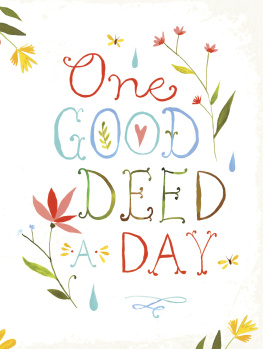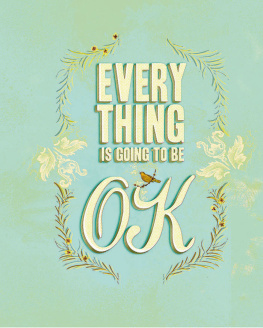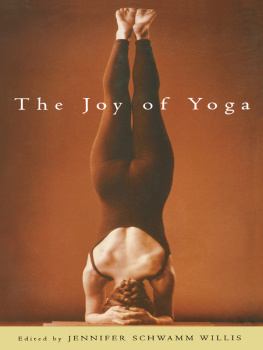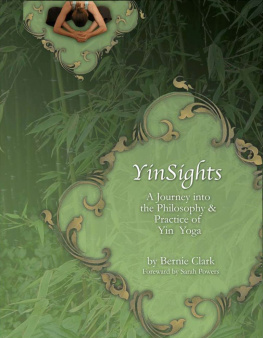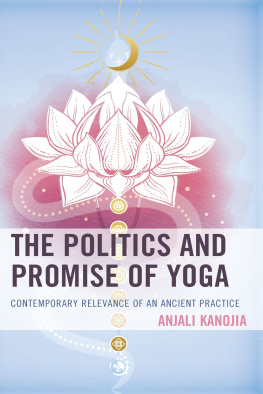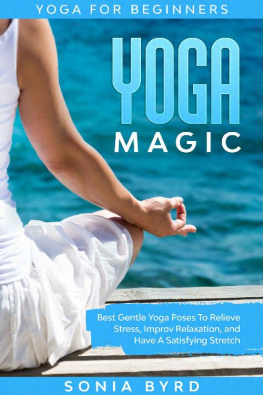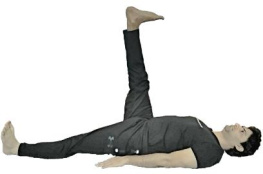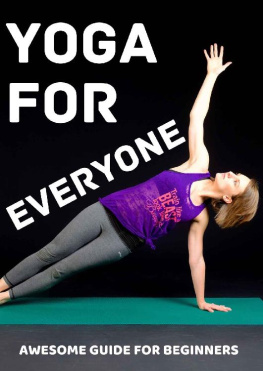

Copyright 2014 by Chronicle Books LLC.
All rights reserved. No part of this book may be reproduced in any form without written permission from the publisher.
Library of Congress Cataloging-in-Publication Data:
Isaacs, Nora.
The little book of yoga / text by Nora Isaacs.
pages cm
Includes index.
ISBN 978-1-4521-2920-4 (hc)
ISBN 978-1-4521-3560-1 (epub, mobi)
1. Hatha yoga. I. Title.
RA781.7.I83 2014
613.7'046dc23
Design by Tatiana Pavlova
Text by Nora Isaacs
Illustrations by Agnes Lee
The information, practices, and poses in this book are not offered as medical advice or suggested as treatment for any condition that might require medical attention. To avoid injury, practice yoga with a skilled instructor and consult a health professional to determine your bodys needs and limitations. The writer and publisher hereby disclaim any liability from injuries resulting from following any recommendation in this book.
Chronicle Books LLC
680 Second Street
San Francisco, California 94107
www.chroniclebooks.com
Introduction
The word yoga means to unite. But what exactly are we bringing together when we bend, stretch, twist, and breathe?
The ancient yogisa yogi being one who practices yogahad some big ideas about union. They believed yoga could unite individuals with the universe, bring about the understanding that all beings are one, and enable us to experience total bliss. Most modern yogis dont have such lofty goals. We simply want to live more comfortably in our bodies. We want to be kinder, to feel better and more alive.
Practicing yoga is really very simple. You focus on your breath. You arrange your body like a cobra or a tree. You balance the best that you can. Yoga can strengthen your muscles, increase flexibility and circulation, boost your immunity, and calm your nervous system. But it can also strengthen your spirit. With a regular yoga practice, you become less reactive in stressful times. You blow off criticism more easily. You stand your ground more firmly. You start to notice the way the light shines through your window in the late afternoon. And you feel spontaneous moments of gratitude during an otherwise mundane moment, or a stirring of compassion for the people around you.
How does this work? How does physical exercisesomething you might do to lose weight or build musclebecome something else entirely? It starts when you realize you can quiet your mind with your body. When you lie down calmly on your mat, you learn how to truly relax. When you fall down in a balancing pose, you learn that you can survive throughand even laugh atyour failures. When you ever so slowly stretch into a forward bend, you learn how to stay present. When you pay exquisite attention to each toe in a standing pose, you learn awareness. These benefits follow you off your mat and weave themselves into your daily life.
According to ancient yoga philosophy, every person is compassionate, loving, and peaceful. Yoga helps us uncover the basic goodness in ourselves and in others, which can so easily become buried beneath anger, resentment, self-criticism, and doubt. The more you practice yoga, the more clearly you can see the truth: All is as it should be. You are perfect just as you are.
This book invites you to learn more about yoga, offering general overviews and inspirational takeaways of various aspects of the tradition: the history, which spans ages and continents; the poses, including a selection of more than thirty-five common favorites; the philosophy, with explanations and present-day interpretations of each limb of the ancient yogis guide to enlightenment, called the Eight-Limbed Path; related wellness exercises such as breathing, meditation, and mindfulness; and ideas for incorporating yoga into your daily life.
No matter what your skill level, and no matter what your goalsbe they fitness-oriented, part of a larger spiritual quest, or tied to a simple curiosity about one of the worlds great ancient traditionsthere is always more to be learned about this mind-body practice. Its called a yoga practice because its never quite finished. The wise yogi knows that the process itself is the destination. That life itselfperhaps even this very momentis the ultimate reward. Discover these possibilities for yourself inside The Little Book of Yoga.
Part One
The Foundation


A Brief History of Yoga
The history of yoga is a complex web of branches and schools that twist and turn, leading to what is considered to be todays modern yoga. No one can pinpoint precisely when yoga was invented, but heres what we do know: Yoga hails from India. The language of yoga is called Sanskrit, an ancient priestly tongue. A pose is called an asana, based on the Sanskrit word for seat. The yoga lifestyle has changed quite a bit since ancient times, when yogis lived in secluded caves or forests and practiced ways to master their bodies, such as stopping their heartbeat. But the essence of yoga remains the same, as does the ultimate goal: to find harmony with yourself and the world.
The Ancient Age
(3000 BCE300 BCE)
Some scholars believe the yoga tradition began as early as 5,000 years ago, linking its origins to a soap-stone seal, which was excavated in the early 1900s, that had human-like figures carved in shapes that looked like yoga poses. Others believe yoga is 2,500 years old, which is when it was first mentioned in an ancient text. Still others believe that yoga originated during the Vedic Age in India, when people focused on ritual, poetry, and transcending the mind through intense focus. During this time, holy men and women were said to have magical powers and practiced strenuous physical feats to overcome the body, which they considered an obstacle to enlightenment. These early yogis were committed to understanding their relationship with the divine, a core idea that is found in many schools of yoga today, thousands of years later.
Over time, the focus shifted from study and rituals toward self-understanding through direct experience. The body was no longer considered an obstacle; rather, it was seen as a means to finding freedom.
The Classical Age
(300 BCE500 CE)
In yogas Classical Age, which also took place in India, yoga came to be seen as a spiritual philosophy that could help people reach their full human potential. Finding freedom wasnt so much about uniting with some great spirit in the sky, but about awakening to ones own authentic self. Its known as the Classical Age because during this time, six classical philosophies were established, one of which is Patanjalis yoga. During this era, the emphasis of the practice was on meditation, rather than on yogas physical poses.
HISTORIC TEXT OF THE CLASSICAL AGE:The Yoga Sutra
The Yoga Sutra is an authoritative text of the Classical Age. It was written at the dawn of the first millennium by a sage named Patanjali. It contains 196 aphorisms on the meaning of yoga, the experience of yoga, the expanding of ones yoga practice, and how yoga can free the soul. It also defined a set of guidelines called the Eight-Limbed Path that serves as a template for some modern-day yoga schools. And it identified five causes of suffering, called
Next page


